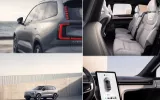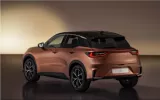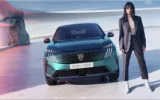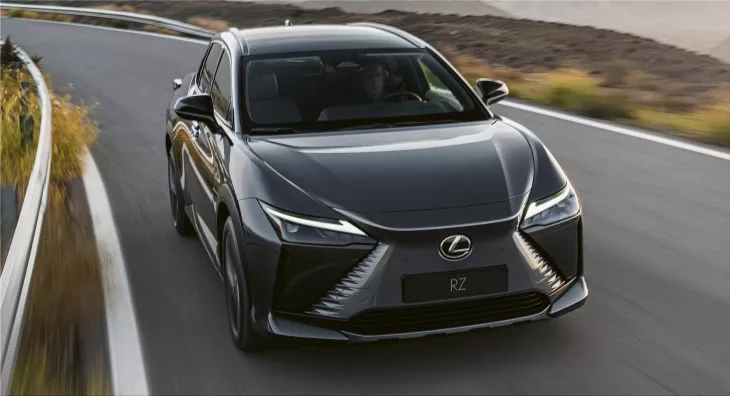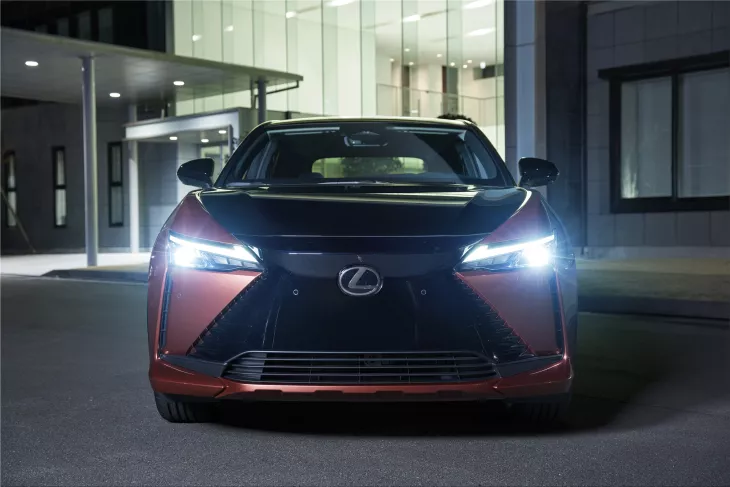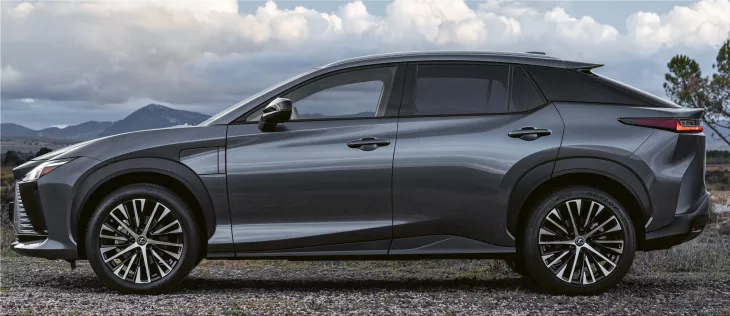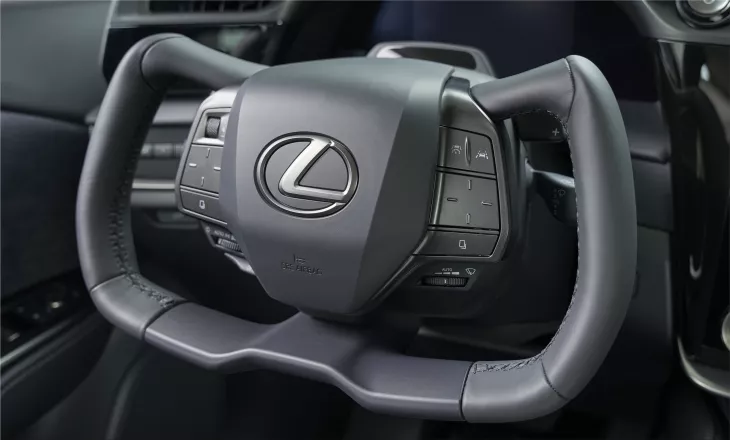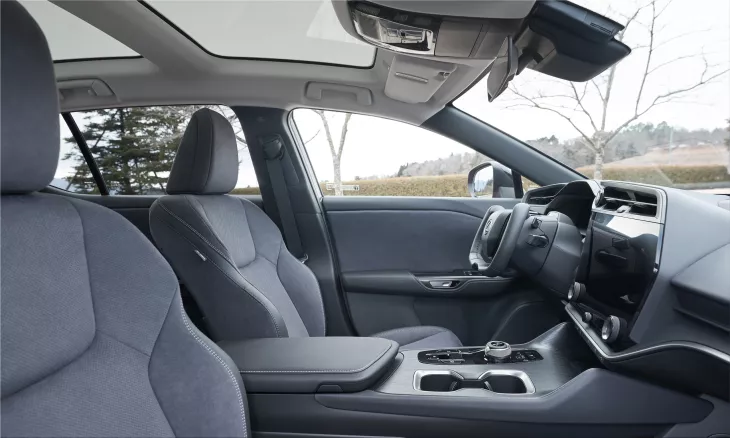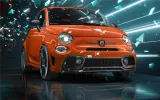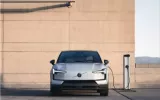Lexus' portfolio development will help the company achieve a critical objective: achieving a sustainable global civilization. By 2030, Lexus will contribute to developing a carbon-neutral society by supplying a comprehensive array of BEVs across all segments. Five years hence, Lexus aims to achieve worldwide BEV sales of 100 percent. To face these difficulties, Lexus will relentlessly enhance its products and human skills by repeating the "drive and repair" development process in Shimoyama, Lexus' new operations headquarters.
As Lexus' first globally accessible dedicated BEV model, the new Lexus RZ 450e exemplifies the brand's move to a BEV-centric strategy and embraces the distinctive Lexus vehicle design and driving experience enabled by sophisticated electrification technology. For driving performance, the utilization of a BEV-specific chassis and a lightweight, extremely stiff body has significantly improved the vehicle's actual performance by achieving appropriate weight distribution through the optimal battery and motor placement. Additionally, the new Steer-by-Wire control and system, in conjunction with the electrified DIRECT4 all-wheel-drive system, provides vehicle management loyal to the driver's purpose. As a result, the driver perceives an intense driving experience, making the Lexus RZ 450e electric car feel like a natural driver extension. Additionally, we researched the development of an audible sound that discreetly communicates vehicle state changes to the driver. These efforts are being made at Lexus' new development center to enhance the distinctive Lexus driving taste, dubbed the "Lexus Driving Signature."
The exterior design reflects the BEV's smooth acceleration and aggressive torque-filled performance. In addition, Lexus's signature spindle grille is replaced with a BEV Spindle Body that prioritizes aerodynamic efficiency, optimum proportions, and style above cooling and exhaust requirements for an internal combustion engine. This styling evolution establishes a new Lexus RZ 450e aesthetic and a new design direction for BEV offerings. Within the spindle, the body is a simple, open interior that emphasizes the idea of sustainable mobility and the Sustainable Development Goals (SDGs) through thoughtfully sourced materials. Though unassuming, the area exudes luxury due to its sculpted details and modern technologies. Additionally, the cabin has an optional panoramic roof that visually expands the space, while an efficient heating approach improves passenger comfort.
As a well-established luxury manufacturer, we feel that Lexus should continue developing attractive electric vehicles while respecting nature and the global environment to attain carbon neutrality. The Lexus RZ 450e was designed to create a Lexus BEV that is secure to ride in, luxurious to touch, and thrilling to drive. DIRECT4, the Lexus Electrified's basic technology, is an all-wheel-drive system that responds quickly and linearly to driver input. In addition, we developed a unique design with practical simplicity for the BEV transition, combining the progression of the spindle grille to the new Lexus spindle body architecture and a cockpit area including the Tazuna concept centered on driver operation. We will continue to strive to provide visitors with unique experiences and a Lexus BEV driving experience.
The "Lexus Driving Signature" is a distinctive Lexus driving experience that aims for a predictable, linear reaction to the driver's wishes. Under all driving situations, LDS gives an exhilarating sensation of fully connected acceleration, steering, and deceleration. The Lexus RZ achieves remarkable essential performance through high-precision motor torque control and appropriate battery and motor positioning, which results in perfect weight distribution and responsiveness. The Natural idea is based on the "DIRECT4" all-wheel-drive system, which dynamically adjusts front and rear drive force in response to driving and road surface conditions. As a result, it produces driving performance in which the car reacts immediately to the driver's input, boosting the "Lexus Driving Signature" feature.
DIRECT4 is a novel all-wheel-drive system created exclusively for Lexus, and the newly designed high-output eAxle motor continually and precisely manages the driving force applied to the four wheels. Moreover, it operates under the vehicle's ground contact load independent of the road surface or driving circumstances, resulting in a thrilling driving experience consistent with the driver's desire.
The DIRECT4 drive force distribution control adjusts the front-to-rear driving force ratio between 100:0 and 0:100 based on wheel vehicle speed, acceleration, and steering angle sensor data. This increases acceleration during startup, handling stability, and reduces power consumption. The system employs a front-to-rear driving force ratio distribution of around 60:40 to 40:60 to decrease vehicle pitch during launch and straight-line acceleration, resulting in a direct acceleration sensation. Cornering speed and steering angle aid in optimizing drive force distribution to achieve excellent handling stability under various driving circumstances. When the steering wheel is moved, driving power is slanted toward the front wheels (75:25 to 50:50), which results in an agile response and superb steering feel. When the vehicle exits a turn, the torque distribution to the rear wheels is increased further (between 50:50 and 20:80) to guarantee enough traction while maintaining vehicle pitch control. Engineers created a refined driving sensation with RZ 450e by coordinating the flawless functioning of their cumulative electrification and dynamic vehicle movement control technologies.
The newly developed eAxle completely integrates the motor, transaxle, and inverter into a compact unit, increasing cruising range, a more spacious interior, and an attractive design. The front axle is packaged in a close front/back system architecture, while the rear axle is packaged in a low-profile configuration, contributing to a more fabulous interior and cargo space. Additionally, adopting a high-efficiency inverter with a Silicon Carbide (SiC) element at the back increases the cruising range.
A pressurization unit provides synchronized front and rear regenerative braking through the independent front and rear hydraulic control. When the Lexus Driving Signature is engaged, the new braking system offers smooth, direct, and controlled braking. Based on Lexus' extensive expertise and accomplishments with hybrid-electric technology throughout the years, the regenerative braking system optimizes energy efficiency to boost the cruising range while improving the brake feel. Stable vehicle posture is accomplished by adjusting the braking force distribution between the front and rear wheels in response to the driver's braking effort. Additionally, ergonomic brake pedal pads are employed to facilitate pedal shifts and depression.
Steer-by-Wire technology with improved steering control is available as an option in addition to the standard circular steering wheel, enhancing the communicative interaction between person and machine. Steer-by-Wire technology permits the electronic interchange of steering and road surface data between the advanced steering control and the tires using electrical impulses rather than mechanical connections. The steering angle is adjusted to around 150 degrees, which significantly reduces the driver's labor and eliminates the need for hand-over-hand operation at crossroads, U-turns, parking, and curving highways. Without the constraints of a sizeable standard steering wheel, designers shaped the steering control compactly and reduced the instrument meter to promote driver involvement and environmental awareness.
By limiting the driver's eye movement while driving and naturally bringing the driver's gaze forward, a cockpit area promoting more involvement with the automobile has been created. In addition, with steering-by-wire permitting the electronic interchange of steering and road surface information via electrical signals between the steering wheel and tires, more emphasis was placed on critical driving information quality and transmission speed. As a result, the new Lexus RZ 450e delivers agile and confident performance through accurate assessment by filtering out excessive vibrations from the tires and brakes and relaying only critical driving information to the driver, such as road information.
When lane tracing help is active, tire movement is limited to the extent necessary, allowing for gentle steering and vehicle movement. Additionally, it enhances the vehicle's overall mobility by regulating the steering gear ratio according to its situation. This results in nimble and agile performance on winding roads and high-speed stability on motorways.
Lexus engineers explore the production of expressive in-cabin noises that transmit driving excitement by developing a conversation between the car and the driver under the Lexus Electrified concept. Engineers accomplished this for Lexus RZ 450e by matching sound frequencies to the vehicle's speed and noise level during dynamic operations such as acceleration. The drivetrain's tone and acoustic transmission characteristics have been tweaked to ensure its pleasantness. Additionally, quietness is sought to optimize inside cabin comfort. The battery beneath the floor acts as a sound barrier, and the whole perimeter of the hood opening is sealed to prevent noise generated by turbulent airflow. Additionally, undesired noise is reduced with the inclusion of front/rear seat acoustic glass, and the redesigned weather-stripping cross-section produces a peaceful, conversation-friendly area, even at highway speeds.
With the sides of the characteristic roof spoiler, aerodynamic forces acting on the body are reduced, guaranteeing driving stability in crosswinds. The roof's center section allows air to flow freely from the sloping rear glass surface to the vehicle's rear. By balancing the aft airflow, the ducktail form at the end of the trunk decreases aerodynamic drag. Additionally, the downforce created helps to a steady driving sensation. Undercovers are used to flatten the underbody of the vehicle, hence reducing aerodynamic drag. The dimpled surface of the front cover creates micro vortices beneath the floor, increasing the feeling of ground contact and adding to stability. The grille has a grille shutter. When there is no need for cooling air, the grille shutter is closed to decrease air resistance.

